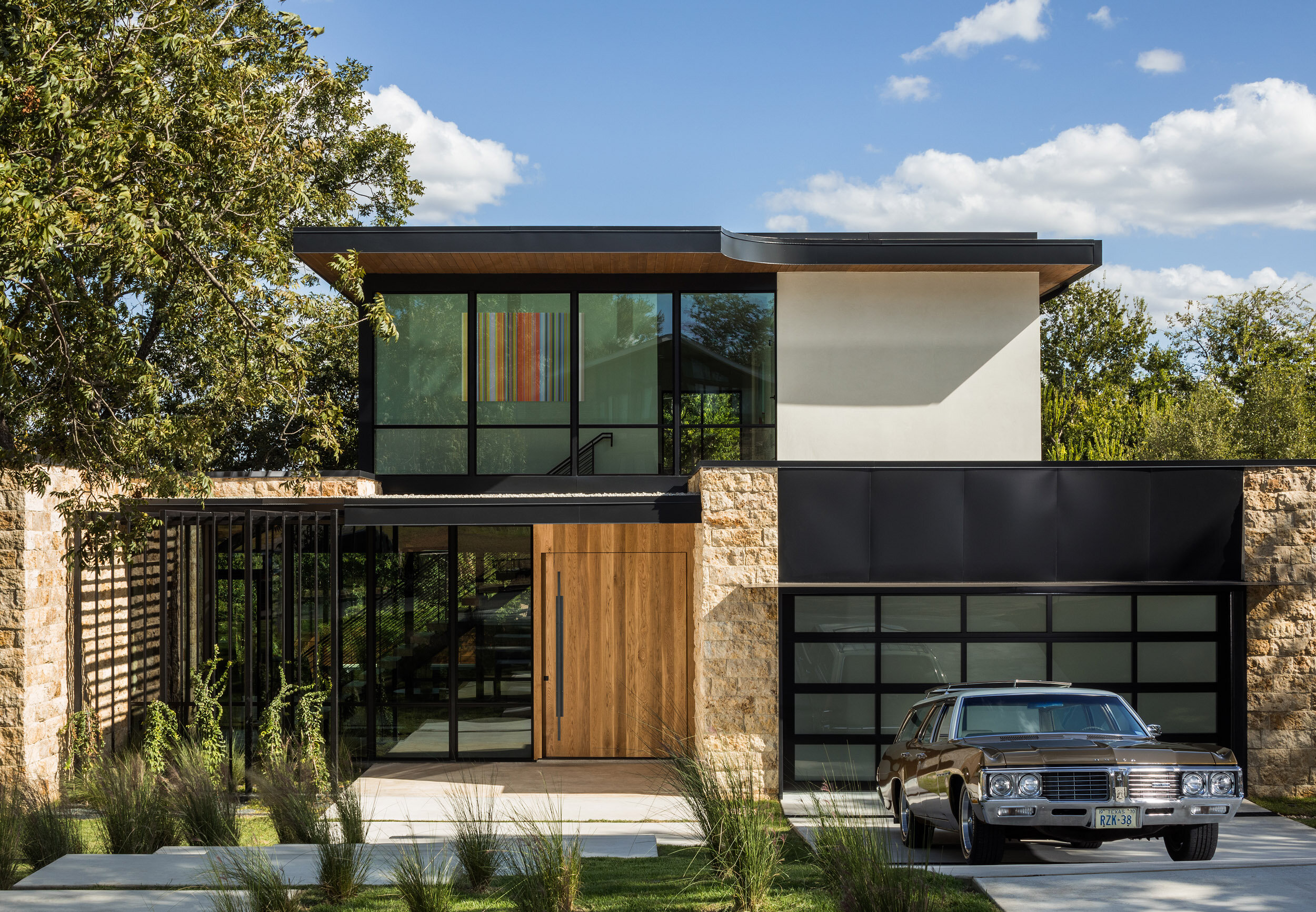Residential House Architect: Creating Unique Homes with Attention to Detail
Residential House Architect: Creating Unique Homes with Attention to Detail
Blog Article
Top Patterns in Residential Architecture You Need To Learn About
As residential design continues to evolve, numerous compelling patterns are shaping the method we make and inhabit our living rooms. Secret advancements such as sustainable structure techniques, the assimilation of wise home technology, and the increase of modular homes highlight a considerable shift towards both capability and ecological duty.
Lasting Building Practices
A raising variety of property tasks are embracing lasting building methods, driven by a growing awareness of environmental effect and energy effectiveness. This change is characterized by the integration of eco-friendly products, energy-efficient styles, and ingenious building and construction techniques. Homeowners and building contractors are progressively focusing on the use of renewable energies, such as bamboo and recycled steels, which not only decrease the carbon impact but additionally boost the sturdiness and visual appeal of residential or commercial properties.
Incorporating energy-efficient systems is an additional crucial aspect of sustainable structure - residential house architect. Attributes such as high-performance insulation, energy-efficient home windows, and solar panels are becoming criterion in brand-new domestic designs. These components not only add to lower power usage yet likewise offer significant long-lasting savings for homeowners
Furthermore, the design of sustainable homes typically emphasizes all-natural light and air flow, decreasing the reliance on man-made lighting and climate control systems. Landscaping methods, such as xeriscaping, additional promote sustainability by minimizing water usage.
As the need for lasting living options proceeds to rise, the household design sector is poised to introduce and adjust, making certain that future homes are not only eco responsible but functional and likewise comfortable for their owners. - residential house architect
Smart Home Modern Technology
Smart home innovation is revolutionizing the way property owners connect with their living spaces, boosting protection, energy, and convenience management. This innovative strategy integrates numerous devices and systems, enabling users to regulate their homes from another location or through automated procedures. Central to this trend is the use of smart tools such as thermostats, illumination, safety and security video cameras, and appliances, all linked via the Internet of Points (IoT)
Among the most appealing features of wise home technology is the capability to personalize setups for optimal power performance. Home owners can keep an eye on power use and change air conditioning, lighting, and heating based on their routines, significantly lowering utility expenses. Moreover, advanced security systems geared up with wise locks and security video cameras supply comfort, making it possible for remote tracking and notifies to prospective safety violations.
Combination with voice-activated assistants improves customer experience, allowing property owners to manage devices with straightforward voice commands. As modern technology continues to progress, the possibility for smart home systems to improve top quality of life expands, making them an important factor to consider in modern-day property architecture. Eventually, smart home modern technology is not just a fad but a basic change toward more smart living settings.
Open Idea Living
Open idea living has become a defining function in modern domestic architecture, characterized by the removal of typical obstacles between areas. This style viewpoint advertises fluidity and connectivity within the home, enabling a smooth transition between areas such as the cooking area, dining, and living spaces. By removing dividers and walls, open principle designs develop a sense of spaciousness, promoting an inviting environment that enhances social communication.

Additionally, this technique to property style aligns with minimalism, concentrating on useful simplicity and aesthetic coherence. Homeowners appreciate the flexibility of these designs, which can be conveniently adjusted to mirror personal design with furnishings setup and style. As open principle living proceeds to get grip, it continues to be a testimony read this post here to progressing household dynamics and the desire for homes that enhance connection and convenience.
Biophilic Style
Biophilic design has actually become increasingly considerable in residential design, highlighting the innate link between people and nature. This style approach looks for to integrate natural environments into living spaces, thus fostering a feeling of wellness and enhancing the lifestyle for residents. By integrating features such as natural light, vegetation, and natural products, biophilic layout advertises an unified relationship between interior atmospheres and the environment.
Key components of biophilic style include large windows that offer unobstructed sights of outside landscapes, living walls that present greenery right into interiors, and open floor plans that urge air flow and all-natural light infiltration. Water features, both inside and outside the home, serve to produce relaxing atmospheres and boost sensory experiences.
Moreover, using sustainable materials not just supports ecological stewardship yet likewise adds to healthier interior air quality. As recognition of ecological issues rises, property owners are progressively prioritizing styles that mirror their connection to nature. Fundamentally, biophilic design not just boosts aesthetic appeal however also addresses emotional and emotional requirements, making it a crucial pattern in modern property architecture.
Modular and Prefab Homes

Moreover, modular and prefab homes are designed with sustainability in mind. Numerous makers utilize environmentally friendly materials and energy-efficient systems, such as photovoltaic panels and advanced insulation techniques, adding to lowered energy intake and reduced utility costs for homeowners. The flexibility of layout options enables personalization, accommodating varied practical requirements and visual preferences.
As the need for cost effective real estate continues to increase, modular and prefab homes present a practical option, attending to both these details financial and ecological challenges. Neighborhoods are significantly recognizing the possibility of these structures, incorporating them into metropolitan and country settings. On the whole, the pattern towards modular and prefab homes represents a shift towards much more sustainable, effective, you can check here and adaptable living environments, making them a critical element of modern property design.
Conclusion
Sustainable building practices and clever home modern technologies improve efficiency and comfort, while open concept living and biophilic design foster social communication and a link to nature. The rise of modular and prefab homes uses customizable and economical solutions, mirroring a wider shift in the direction of functional and liable living.
Trick developments such as lasting structure practices, the assimilation of smart home modern technology, and the surge of modular homes underscore a considerable change in the direction of both performance and environmental responsibility.The rise of prefab and modular homes has actually changed the domestic architecture landscape, offering ingenious solutions for effective and lasting living.Additionally, modular and prefab homes are designed with sustainability in mind. Overall, the trend towards modular and prefab homes indicates a change towards a lot more lasting, effective, and versatile living environments, making them a critical aspect of contemporary property design.
Sustainable building techniques and wise home modern technologies improve performance and benefit, while open idea living and biophilic layout foster social communication and a connection to nature.
Report this page